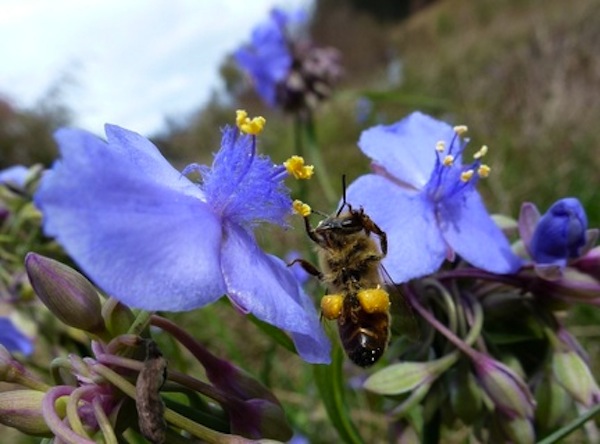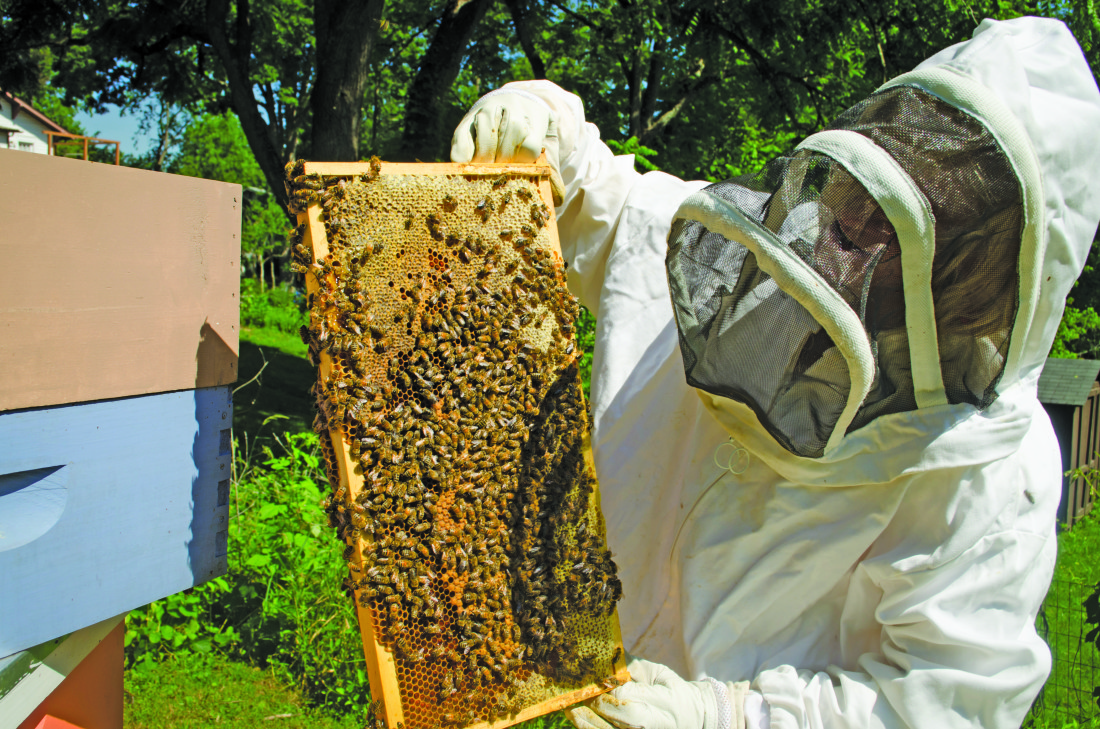In the past few months, two major chain retailers have been busy bees. Both The Home Depot and Lowe’s have begun phasing out the sale of flowering plants containing pesticides called neonicotinoids, which have been linked to declining populations of bees and other pollinators.
“Right now, 80 percent of our flowering plants are neonic-free, and we plan to completely phase out the use of neonics on our live goods by the end of 2018,” says Matthew Harrigan, Home Depot’s corporate communications and public relations manager. “But in the meantime, we’re one of the few retailers that have started requiring the suppliers to label neonic-treated plants, so that customers who believe that neonics are impacting the bee population won’t unknowingly purchase those plants.”
The decision to phase out these flowering plants was made about two months ago, Harrigan explains. And though the company listens to the feedback from activist groups, he continues, Home Depot ultimately makes these kinds of big decisions based on its own research and analysis.
The company’s environmental team has been a hive of activity, conducting research on neonics for the past 2 1/2 years, notes Ron Jarvis, vice president of merchandising and environmental innovation.
“We started out by talking to our suppliers, talking to our growers, and we spent a lot of time talking to the Environmental Protection Agency,” says Jarvis. “We reached out to the Xerces Society; we had conversations with Friends of the Earth and other organizations. We’re just trying to understand exactly what the issue is and how much science there is surrounding the pros and cons.”
Eventually, Jarvis and his team concluded that neonicotinoids are either lethal or sublethal (meaning they cause some harm) to pollinators at certain levels. But there wasn’t a clear consensus as to what those levels are.
“We started trying to find out: Is it 100 parts per billion, is it 2 parts per billion, or is it somewhere in between? And does it differ with nectar versus pollen?” Jarvis explains. “We continued to talk to the EPA, saying, ‘There’s got to be information you guys have out there.’ They were very helpful: They were going through the same process we were, trying to find those numbers.”
A murky picture
Information obtained from the EPA, he continues, seemed to indicate that 30 parts per billion for pollen and 120 ppb for nectar were acceptable levels of neonics that wouldn’t adversely affect bee populations. Meanwhile, tests conducted by Jarvis and his team found that concentrations of both nectar and pollen in the flowers Home Depot sells averaged a meager 4 to 5 ppb.
That, he says, is “much, much lower than any of the consensus out there on what the sublethal levels would be. I don’t think we were having any effects on the pollinators prior to us pulling out of it, but not being able to get a consensus and clear direction, we decided just to continue the pull-down of the product and then set a time frame to be out of it completely.”
The only exceptions, says Harrigan, would be if state or federal regulations required treating plants with neonics, or if undisputed science eventually proves that the levels on the retailer’s live goods don’t harm pollinators.
Last year, the White House announced that it would be working with the EPA on new steps to promote the health of bees and other pollinators.
In 2014, beekeepers nationwide reported losing about 40 percent of honeybee colonies, according to an article on the White House’s website titled “Announcing New Steps to Promote Pollinator Health.” That substantial loss threatened both beekeepers’ livelihoods and the pollination services bees provide.
Varroa mite a bigger problem
But Rick Coor, president of the North Carolina State Beekeepers Association, maintains that a pest called the varroa mite, not pesticides, is the greatest threat to bees.
“I was a beekeeper as a teenager in the 1970s,” says Coor. “It was easy in those days: There were wild bee colonies in old buildings and hollow trees. All those bees are gone now, not from pesticides but due to the parasitic varroa mite. This natural enemy arrived in the New World in the late ’80s and is credited with killing all the wild bees. The varroa mite,” he says, “is the No. 1 enemy of the honeybee above all other forces, natural and man-made.”
Coor also points out that bees are only one of many species of pollinators. “They are very efficient pollinators, due to the fact that they’re social insects. One colony can produce a field force of tens of thousands of individuals, compared to a bumblebee colony of maybe 100 members at the peak of the season,” he explains. “Monoculture of crops negates that impact, however. A small plot of vegetables can be greatly impacted by a colony of honeybees, but how about 100 acres or more of squash or melons?
“I once heard a very informative presentation by a researcher at N.C. State who’d studied the pollinators on a blueberry farm. There were scores of different pollinators that visited the plants, as demonstrated by an extensive bug collection the lady had assembled.”
Pesticides, notes Coor, kill many insect species. But that’s only one piece of a much larger and more complex picture. “If all the pesticides were gone tomorrow and their traces vanished, the bees would still suffer from monoculture — an agricultural practice that affords a bee forage in only a short period each season. They would suffer from loss of habitat, highways and homes; suffer from modern forestry, where deciduous trees are cut and replaced with pines which offer no resources to a bee; suffer from inbreeding due to high demand; suffer most of all from the varroa mite, a vector for viruses and diseases.”
Culture shift
The pesticide problem, Coor maintains, also reflects a change in the culture of farming.
“Once I was invited to participate in an open discussion about bees and farmers and commercial pesticide users,” he recalls. “At least one commercial nurseryman made it clear that someone who places a beehive near his business is knowingly placing the bees at risk, because [the nurseryman] isn’t obligated to change his spraying practices.”
Also in the room, continues Coor, were a few men in their 30s, third- and fourth-generation farmers who nonetheless “made it clear that they were farming to make money and pay bills.” These men, he says, felt they had the right “to spray any pesticide they saw fit.”
“I left the room wondering whether those young farmers realized that their fathers before them, who tilled the same ground, were not annually coating it with deadly chemicals, and that chemical farming only came of age in the mid-1900s.”
Many farms, notes Coor, “especially in the East, have been continuously cultivated since the 1700s. What if this land had been continuously sprayed with poisons for 250 years? That’s what we’re headed for. But in the end, what’s being done to our environment, to our bees, is not against the law.”
Coor considers the phaseout of flowering plants containing neonics by Home Depot and Lowe’s a start that other major retailers should follow. “There are many different pesticides other that neonics to get the job done with,” he points out. “Public awareness is one of the ways that pesticide use can be addressed. This will help.”
At the same time, continues Coor, “I caution against any celebration of sorts, because we’re speaking of one classification of pesticides that the two retailers are banning. That still leaves a vast array of poisons to use. We should not confuse progress with public relations, but maybe the retailers are hearing the noise.”




Before you comment
The comments section is here to provide a platform for civil dialogue on the issues we face together as a local community. Xpress is committed to offering this platform for all voices, but when the tone of the discussion gets nasty or strays off topic, we believe many people choose not to participate. Xpress editors are determined to moderate comments to ensure a constructive interchange is maintained. All comments judged not to be in keeping with the spirit of civil discourse will be removed and repeat violators will be banned. See here for our terms of service. Thank you for being part of this effort to promote respectful discussion.